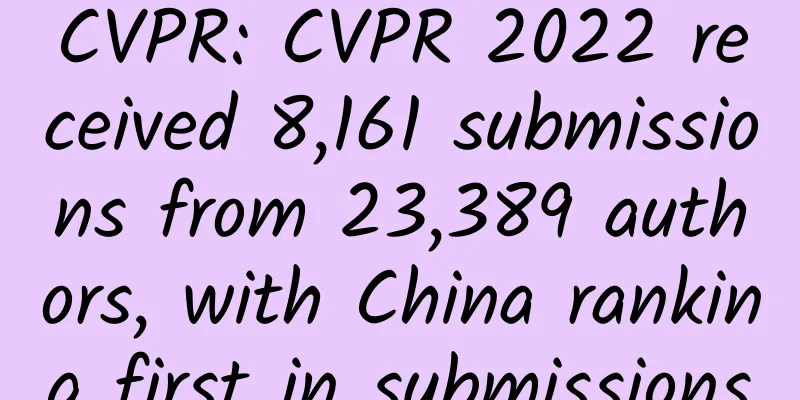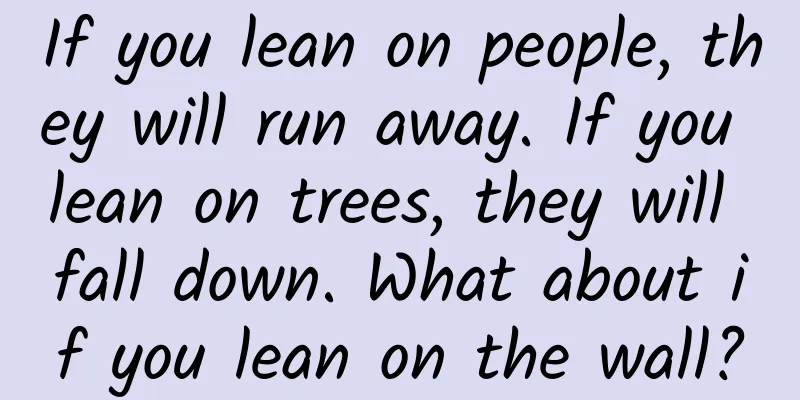CVPR: CVPR 2022 received 8,161 submissions from 23,389 authors, with China ranking first in submissions

|
CVPR Express: China has the highest number of submissions, accounting for 44.59% of the total; Tongji University and Alibaba Group won the Best Student Paper Award; the Huang Xutao Memorial Award went to Stanford University Professor Fei-Fei Li; "Learning to Solve Hard Minimal Problems" won the Best Paper Award. In addition, it is worth mentioning that this year's CVPR conference specially set up a session to commemorate Sun Jian, a young AI scientist who recently passed away due to illness. A memorial video made by Sun Jian's relatives, friends and colleagues was played on the spot. After the video was played, the scene applauded for more than ten seconds. On June 21, local time, CVPR (Conference on Computer Vision and Pattern Recognition) 2022, the world's top conference in the field of computer vision and pattern recognition, opened in New Orleans, USA. This is the first time that offline participation has been resumed after the epidemic, and the number of offline registered participants has reached 5,641, even exceeding that of 2017. CVPR 2022 received a total of 8,161 submissions from 23,389 authors, a 15% increase from 7,093 submissions in 2021. Among them, authors from mainland China had the largest number of submissions (44.59%), and the United States ranked second with 20.65%. Long Quan, top row, second from right; Gang Hua, bottom row, second from left. This year's conference has two Chinese chairmen, namely, Long Quan and Gang Hua. According to Gang Hua, the number of papers submitted and accepted by CVPR increases by 15% every year. This year's conference received 2,064 papers, with an acceptance rate of 25.3%. The CVPR 2022 Thomas Huang Memorial Award was won by Fei-Fei Li, a well-known Chinese female scientist and the first Sequoia Professor in the Department of Computer Science at Stanford University. The Xutao Huang Memorial Award is named after Xutao Huang, a leading figure in the field of computer vision. It was established to recognize outstanding individuals who have made long-term contributions, research, and guidance in the field of computer vision. Starting in 2021, the award will be given annually to researchers who have graduated with a Ph.D. for at least 7 years, preferably in the middle of their career (no more than 25 years after graduating with a Ph.D.). Candidates for the award consider all researchers in the field of CV, and the award includes $3,000 in cash and a medal. When mentioning Mr. Huang Xutao, one can't help but think of the "40-year inheritance of Chinese computer vision" that is circulated in the computer industry. "16 years ago, Huang Xutao went to Hong Kong for Christmas and inadvertently discovered that several leading figures in computer vision who were at the gathering were 10 years apart in age: Huang Xutao, born in 1936, Ma Songde, born in 1946, Gao Wen, born in 1956, and Shum Heung-yang, born in 1966. Everyone discussed whether they could find another leading figure in computer vision who was 10 years younger at the next gathering, and the discussion quickly pointed to the same person, Sun Jian, born in 1976, a student of Shum Heung-yang." Professor Chen Changwen of the Hong Kong Polytechnic University said at the "Thomas S. Huang Memorial Session - 40 Years of Inheritance of Computer Vision in China" at the 2020 Global Conference on Artificial Intelligence and Robotics (GAIR). It is a pity that Sun Jian passed away on the eve of the conference. We can still see many commemorative articles written by his students and friends. Sun Jian was born in October 1976. He was the chief researcher of Microsoft Research Asia, the chief scientist and director of the research institute of Megvii, and led the technology research and development of Megvii. Sun Jian has won the CVPR Best Paper Award twice before. According to the program chairman Hua Gang at the meeting, "As a well-known scholar in the field of CV, Dr. Sun Jian has achieved fruitful research results." According to Google Scholar data, Sun Jian's papers have been cited more than 286,000 times, with an h-index of 121. If we were to name three representative papers of Dr. Sun Jian, Hua Gang thinks the first one should be "Stereo matching using belief propagation". The second one is the "dehazing" paper "Single Image Haze Removal Using Dark Channel Prior" completed by his team, which is also the first Asian paper to win the CVPR Best Paper Award. The third paper is "Deep Residual Learning for Image Recognition". This paper is about the residual network ResNet created by Sun Jian together with team members including He Kaiming. It is Sun Jian's most well-known work and the most cited of all his papers. After being proposed in 2015, ResNet won the ImageNet championship and won the CVPR 2016 Best Paper Award. ResNet is the world's first deep neural network with more than 100 layers, and is also one of the most important research in the field of deep learning. The main contribution of the residual neural network is the discovery of "degradation" and the invention of "shortcut connection" to address the degradation phenomenon, which greatly eliminates the difficulty of training neural networks with too much depth. It is precisely because of ResNet that the depth of neural networks has exceeded 100 layers for the first time, and the largest neural network has even exceeded 1,000 layers. This year, the CVPR Best Paper Award went to "Learning to Solve Hard Minimal Problems" by ETH Zurich, University of Washington, Georgia Institute of Technology, and Czech Technical University. This paper proposes a method for solving difficult geometric optimization problems under the RANSAC framework. The original geometric optimization problem is relaxed to produce a minimal problem with many pseudo-solutions, while the method proposed in this paper avoids calculating a large number of pseudo-solutions. The paper “Dual-Shutter Optical Vibration Sensing” from the Carnegie Mellon University team received an honorable mention for the best paper. The paper "EPro-PnP: Generalized End-to-End Probabilistic Perspective-n-Points for Monocular Object Pose Estimation" from Tongji University and Alibaba won the Best Student Paper Award. It can be noted that this paper was completed by all Chinese authors. The paper "Ref-NeRF: Structured View-Dependent Appearance for Neural Radiance Fields" from Harvard University and Google Research was nominated for the Best Student Paper Award. This year's Young Investigator Awards were received by Bharath Hariharan, an assistant professor of computer science at Cornell University, and Olga Russakovsky, an assistant professor of computer science at Princeton University. |
<<: Broadridge: Fast-tracking digital transformation with next-generation technologies report
>>: Using smart devices to keep you safe? Beware of being fooled by superficial information
Recommend
High-value model for private domain operations!
Does your private domain need traffic growth? Is ...
In a few words: When disposable tableware is made of wood, will we have enough trees?
Niu Niu: Xiaobing, why do KFC spoons now use wood...
Cook has ruined Apple's corporate culture. Why does Apple treat the Chinese market differently?
Recently, "China Red" should have been ...
Prepare for Double Eleven: 4 Case Studies to Help You Create the Best Event
Double Eleven will be coming soon. Various indust...
Tik Tok Teacher Yu Yinuo's textbook unit synchronized composition class
Introduction to the resources of the textbook uni...
How long will it take to lift the risk control on Fenqi Le? The details are as follows
How long will it take to lift the risk control on...
Huge profits from local traffic, a money-making project combining online and offline
The short video layout in the same city is a proj...
Xpeng Motors announces completion of Series A+ financing, with Alibaba becoming the fourth largest shareholder
[NetEase Intelligence, December 15] Today, He Xia...
Hemorrhagic fever is clearly the fault of the mice, so why are we not allowed to eat strawberries?
...
Is it true that Android sub-thread UI operations are not allowed?
Author: Zhang Xichen, vivo Internet Server Team 1...
Top 10 channels for APP operation and promotion!
As an Internet operator and promoter, do you know...
They dare to squeeze into any narrow place. Are cats actually liquid?
Leviathan Press: Cat owners know the flexibility ...
Allergies are prevalent in autumn, what should we do?
《Cotton Swab Medical Science Popularization》 Wei ...
7 mistakes in app user acquisition and 7 ways to avoid them
Exploring mobile applications is not an easy task...
Only 5% of Android phone users plan to switch to iPhone 6
According to technology blog CNET, Apple's ne...








![[Popular Science on Epidemic Prevention and College Entrance Examination Stress Relief] What can parents of candidates do to keep in a good state for the exam?](/upload/images/67f2a676b8435.webp)
